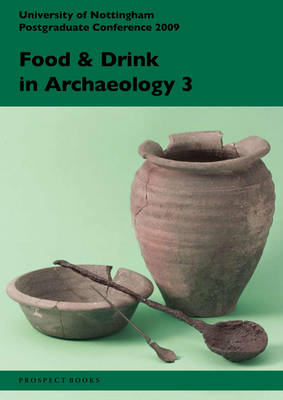Nottingham University: Food & Drink in Archaeology
1 total work
Food and Drink in Archaeology 3
by Dave Collard, James Morris, and Elisa Perego
Published 30 January 2012
This is the third volume of a series from the Department of Archaeology at Nottingham University presenting work by postgraduates and early-career researchers from that university and elsewhere in the world. The essays reflect that while the importance of nutrition for survival has long been recognized, increasing emphasis is now being put on the cultural significance of the production, distribution and consumption of foodstuffs throughout all archaeological periods. Changes in archaeological methods are also demonstrated by the authors in their widespread reliance on zooarchaeological and archaeobotanical evidence.
There are twelve full-length papers and four shorter contributions discussing topics as varied as pyschoactive consumption in Cypriote Bronze Age mortuary ritual; elite ideology and feasting practices in Early Iron Age Greece; intoxicating drinks in ancient Indian art, literature and archaeology; sixteenth-century polemics about cold-drinking; the deceased as metaphorical food in Iron Age Veneto; food diversity in Mesolithic Scotland; a singular Late Bronze Age animal sacrifice event; ritualized feasting-goods from Norwegian graves dating from the first to the fifth centuries AD; animals in the household: not just a foodstuff; feasting and the state in Uruk Mesopotamia. --Book Jacket.
There are twelve full-length papers and four shorter contributions discussing topics as varied as pyschoactive consumption in Cypriote Bronze Age mortuary ritual; elite ideology and feasting practices in Early Iron Age Greece; intoxicating drinks in ancient Indian art, literature and archaeology; sixteenth-century polemics about cold-drinking; the deceased as metaphorical food in Iron Age Veneto; food diversity in Mesolithic Scotland; a singular Late Bronze Age animal sacrifice event; ritualized feasting-goods from Norwegian graves dating from the first to the fifth centuries AD; animals in the household: not just a foodstuff; feasting and the state in Uruk Mesopotamia. --Book Jacket.
